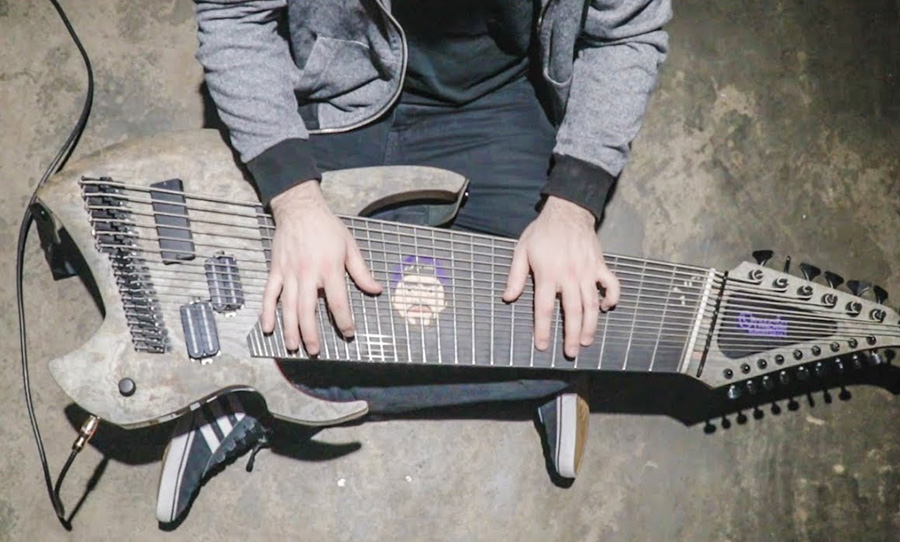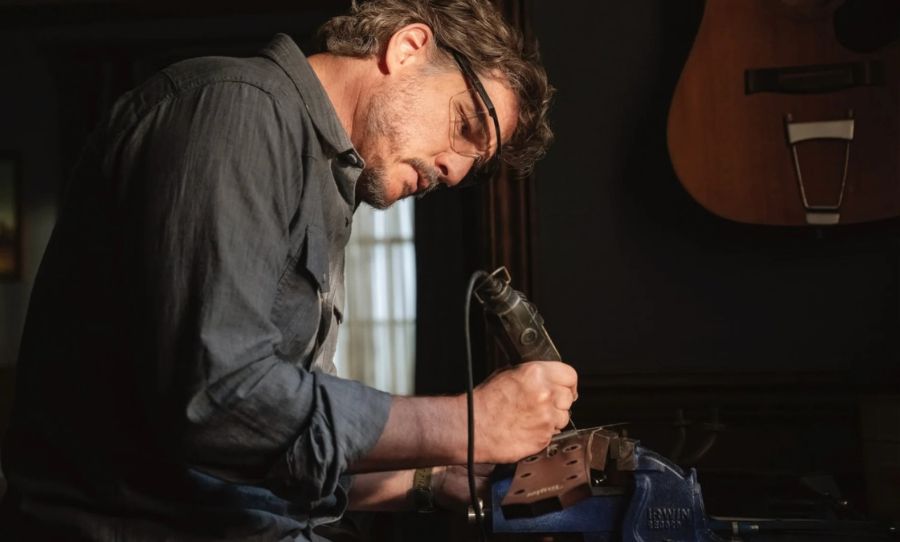Characterised by epic, aggressive tone – and guitars with too many strings – djent is a worldwide phenomenon. Let’s take a closer look.
What is djent? Well, it’s not a typo. It’s a kind of music and what’s more, it’s a phenomenon.
Metal, much like electronic music, can be splintered into a thousand different sub-genres. Owing to its vociferous fanbase, heated debate about which band belongs in what category often swells up in myriad online communities. Even to the uninitiated though, djent is pretty easy to recognise.
So let’s explore the wonders of this style, its origins, and how YouTube keeps it alive and thriving.

Scandinavian origins
Like all good metal stories, djent begins somewhere north of the Arctic circle.
Swedish metal legends Meshuggah are often credited with kicking off the djent sound. Legend has it that the phrase was first coined by the band’s lead guitarist Fredrik Thordenal. Mârtin Hagström of Meshuggah told Revolver that Thordenal drunkenly spelled out the sound to a fan, “We want that dj— dj— dj—“.
That’s right, if you say the word, you’ve actually nailed the sound of the genre. Interestingly, Hagström also apologised for the formation of the style in the same interview: “We didn’t intend to — our bad. I think it’s a misconception, that djent thing. I think it’s kind of hilarious.”
Characteristics
So while the style’s progenitors may chuckle quietly at its popularity, musically at least, it ain’t no joke. The time signature gymnastics, the angular melodies, the Olympic speed of palm-muted riffage — it takes crazy chops and a lot of practice to pull a convincing djent jam.
Also, the guitars are worth mentioning. Into classy, vintage Teles, Strats, Les Pauls and SGs? You might wanna look away now. This is strictly modern prog territory; a 7-string guitar is a minimum to get you in the door. Often it’s an 8-string or 9-string. Sometimes, it’s a 20-string?
Djent is an orchestra of guitar, all on one instrument. Metal shredders have been tapping their way to glory in the upper-registers for decades. Djent, on the other hand, celebrates the bassy registers of the guitar. So depending on how many (extra) strings you have on your axe, you can go pretty damn low.
So while you’re plumbing the lower octaves, won’t things get a bit messy? Well, aside from favouring crisp distortion — which excites the upper harmonics of a fundamental frequency, making single-note passages more intelligible than they would be with a clean tone — key to the djentish vernacular is rhythm. The best djenters out there have rhythmic chops that would make James Brown proud and it’s absolutely integral the articulation of the genre’s bone-crushing riffs.
The popularity of djent
This musical style is all about mastery of the instrument, pulling off sounds that seem to humanly impossible, all the while pumping out infectious, headbanging rhythms. In a word, it’s catchy as all hell, and seeing YouTubers perform breakneck feats of guitar technique is undeniably impressive. Therefore, djent guitarists have garnered massive followings.
With that popularity, it’s prone to become a meme in its own right, but it seems that guitarists aren’t too precious about that. Check out Ichika Nito’s mash-up of two archetypal YouTube memes.
So, while there may be some derision from the purists, it’s clear that this style isn’t going anywhere. Uniquely suited to video medium, it simultaneously provides a platform for guitarists to showcase their otherworldly chops, as well as build communities of like-minded djentlefolk.



